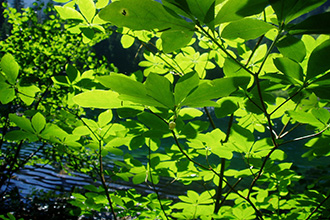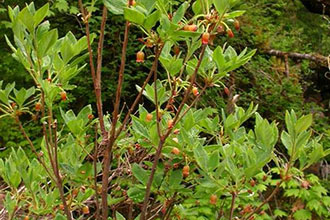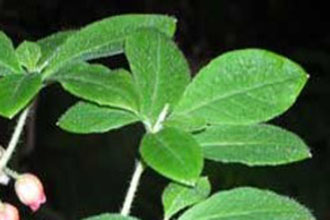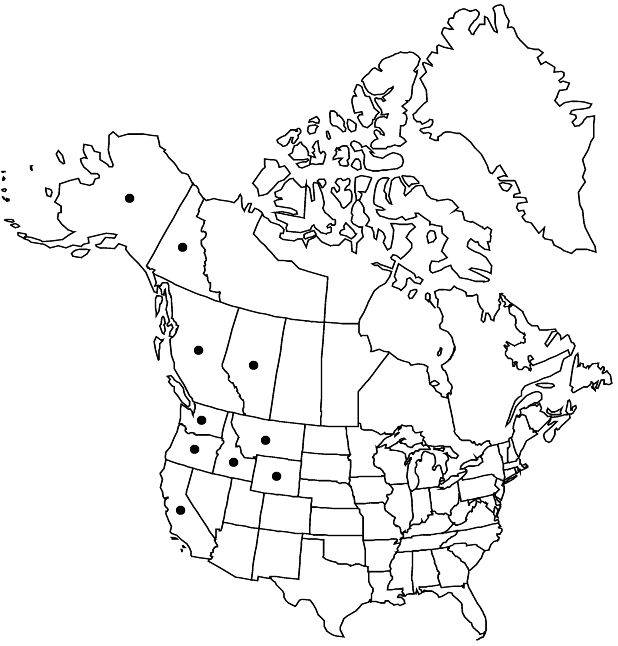Taxonomy: Kingdom - Plantae (plants). Subkingdom - Tracheobionta (vascular plants). Superdivision - Spermatophyta (seed plants). Division - Magnoliophyta (flowering plants). Class - Magnoliopsida (dicotyledons). Subclass - Dillendiidae. Order - Ericales. Family - Ericaceae (heath). Genus - Menziesia Sm. Species - Menziesia ferruginea Sm.
Ecology: Fool's huckleberry is a common shade-tolerant shrub, found predominantly on steep, northerly exposures with abundant moisture. Fool's huckleberry generally occurs from 1,000-2,300 m in elevation on 15 to 60 percent slopes. Absence from extreme northern distributions may imply a limitation to cold temperatures. Menziesia may be restricted to areas with adequate snow cover, which protects plants from winter desiccation. Overstory components mostly include subalpine fir (Abies lasiocarpa), Pacific silver fir (A. amabilis), western redcedar (Thuja plicata), mountain hemlock (Tsuga mertensiana), western hemlock (T. heterophylla), and Engelmann spruce (Picea engelmannii) .
In the WFDP: Fool's huckleberry is uncommon in the WFDP, with only twenty stems (many of which are multiple leaders of 4 main shrubs) above 1 cm at DBH that are tagged.



